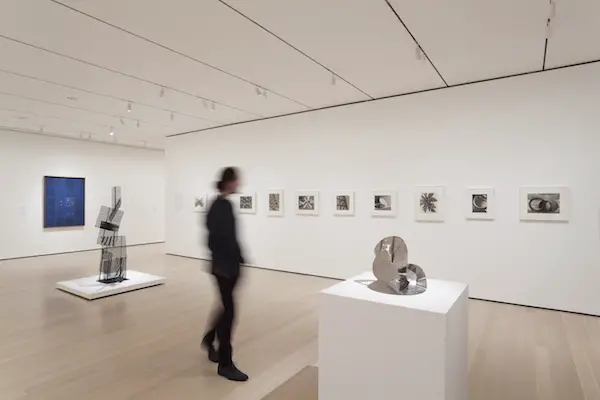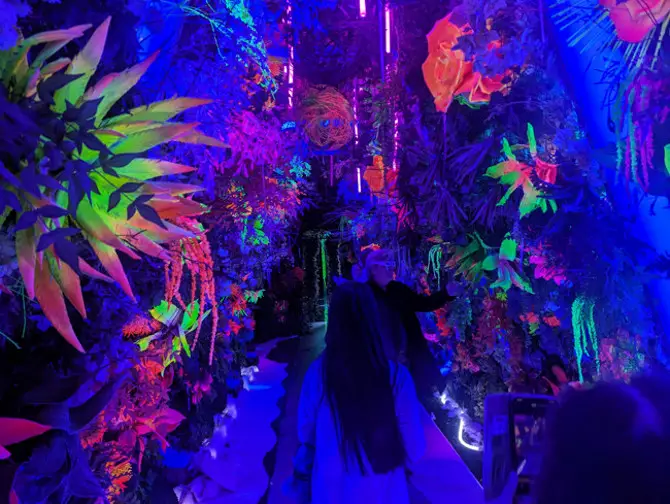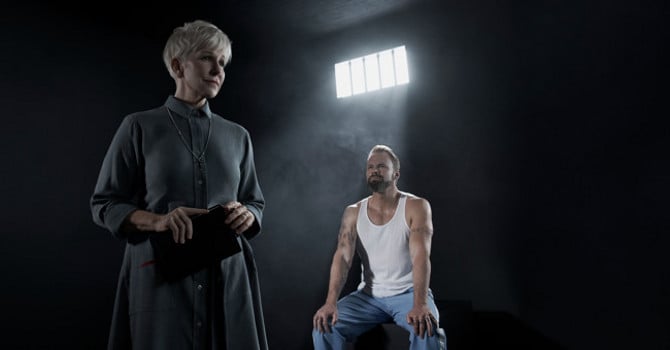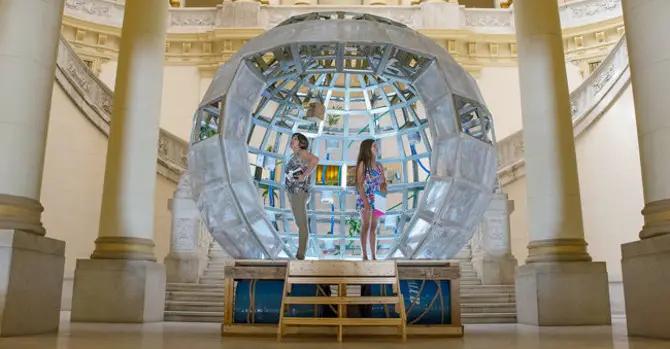Every day, New Yorkers and visitors alike flock to the Museum of Modern Art to see some of the most famed pieces of art in the world, from Van Gogh's Starry Night to Monet’s Water Lilies. This spring, visitors have some new—distinctly female—artworks to discover for the first time, thanks to MoMA’s current exhibition Making Space: Women Artists and Postwar Abstraction.
Installation view of Making Space: Women Artists and Postwar Abstraction. The Museum of Modern Art, New York, April 15-August 13, 2017. © 2017 The Museum of Modern Art. Photo: Jonathan Muzikar
Making Space centers on the work of female artists who created abstract work between the end of World War II and the late 1960s, in the cultural moment just before the feminist movement took hold. The exhibition brings together paintings, fiber art, sculpture, interior design, and more, spotlighting female artists that range from such well-known creators as minimalist painter Agnes Martin and abstract expressionist painter Lee Krasner, to lesser-known artists like photographer Gertrudes Altschul and Polish fiber artist Magdalena Abakanowicz.
This variety is Making Space’s greatest strength, as the exhibition elevates a wide range of artistic voices that goes far beyond just the era’s most iconic female artists. Rather than exhibiting the work of a few famed women and letting them stand on behalf of all the era’s women, Making Space gives dozens of individual female artists their—often overdue—chance to shine. The exhibition also draws heavily from international artists, including many from Latin America, painting a distinctly global portrait of the era’s artistic women.
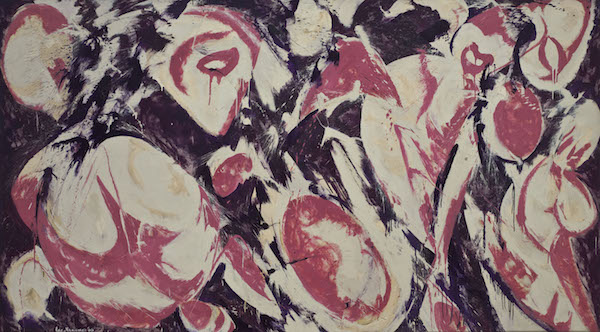
Lee Krasner (American, 1908–1984). Gaea. 1966. Oil on canvas, 69″ x 10′ 5 1/2″ (175.3 x 318.8 cm). The Museum of Modern Art, New York. Kay Sage Tanguy Fund, 1977 © 2017 Pollock-Krasner Foundation / Artists Rights Society (ARS), New York.
By incorporating such a wide variety of artists, Making Space covers a diverse array of mediums, not only dealing in the traditional fine art world of sculpture and painting, but also dipping into the worlds of popular design. Patterned textiles by designers Lucienne Day and Vera, along with a bowl chair by Brazilian architect Lina Bo Bardi, display how modernism and abstraction became not only staples of the art world, but of the home as well, creating an even richer portrait of the era’s female artistic output.
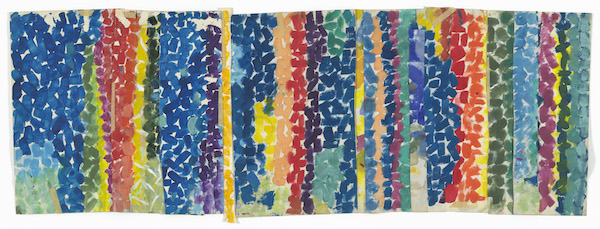
Alma Woodsey Thomas (American, 1891–1978). Untitled. c. 1968. Synthetic polymer paint and pressure-sensitive tape on cut-and-stapled paper, 19 1/8 x 51 1/2″ (48.6 x 130.8 cm). The Museum of Modern Art, New York. Gift of Donald B. Marron, 2015.
The female artists whose work is displayed faced tough odds, the exhibition makes clear, as they fought for recognition in the face of an industry that openly favored men. Quite a few of the exhibition’s artists are even perhaps best known as the spouse of a better-remembered male artist, such as Lee Krasner (wife of Jackson Pollock) and Willem De Kooning’s wife Elaine De Kooning. But in Making Space, it’s the women that matter. The exhibition puts their unique achievements at the forefront, positioning them not as wives, but as individual artists worthy of being seen.
Through both these spouses and the exhibition’s numerous other female artists, Making Space beautifully demonstrates how these artists were able to carve out unique spaces that let their individual voices shine. Some artists co-opted more traditionally “female” genres like textiles and craft and elevated it to a gallery-level standard, while others worked within painting and sculpture and infused it with their own unique points of view. Regardless of the medium, these women were able to assert their own independence in an era in which women doing so was all too rare and—finally—are getting their due.
Making Space: Women Artists and Postwar Abstraction is on view at MoMA through August 13. More information can be found at MoMA.org.


